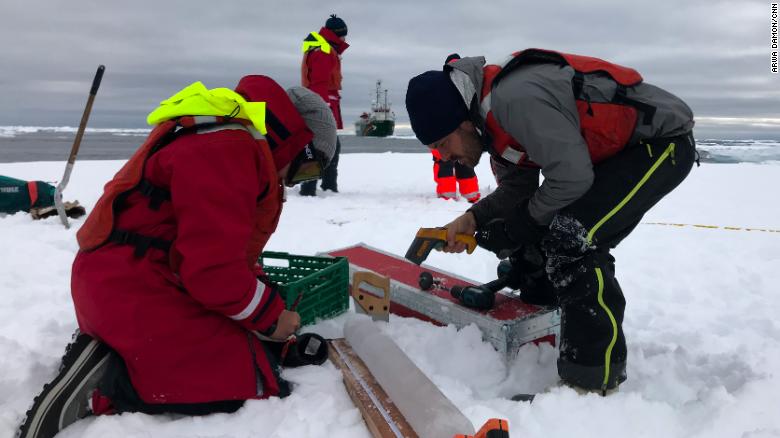The Russian Navy has discovered five new islands in the Arctic after they were revealed by melting glaciers.
The Navy first spotted the islands in 2016 using satellite imagery, but only confirmed and mapped them in August and September during an expedition to the site, the Russian Defense Ministry said on Tuesday.
The new islands are located near the Vylki glacier off the coast of the remote Novaya Zemlya archipelago, which lies in the Arctic Ocean northwest of the Russian mainland. They range in area from 900 to 54,500 square meters (about 9,690 to 586,630 square feet) — as big as 10 football fields.
“Basically, this (discovery) is associated with the melting of ice,” said expedition leader Aleksandr Moiseyev on Tuesday, according to state-run news agency TASS. “Previously these were glaciers, but the melting of ice led to the islands emerging.”
Moiseyev added that since the islands have been charted, the findings will now be officially recorded and the islands will be named.
Russian Navy researchers have been using satellite data for years to study coastline changes, according to the Defense Ministry. Between 2015 and 2018, they confirmed more than 30 new islands, capes and bays along the two archipelagos of Novaya Zemlya and Franz Josef Land.
A student named Marina Migunova was the first to spot the five islands in 2016 while writing her final qualification paper, according to the Defense Ministry. She is now an oceanographic measurement service engineer for the Navy.
In the years after her discovery, researchers photographed and conducted topographical surveys of the islands, before an expedition launched mid-August to visit the islands in person.
The expedition included scientists and documentary filmmakers from the Russian Geographical Society and the Russian Arctic National Park, according to the Defense Ministry. Apart from visiting the Novaya Zemlya, the crew also visited Franz Josef Land, conducting research and surveying the ocean and land.
This discovery follows a similar one made in January, when glaciers in the Canadian Arctic melted enough to reveal land that had been hidden for at least 40,000 years.
Scientists warn that emerging islands aren’t flukes, but rather the direct result of the growing climate crisis as the Arctic undergoes a mass melting of glaciers and sea ice.
The Arctic is heating up twice as fast as the global average, and the resulting glacial melt could potentially destroy the cycle of life that starts there — and threaten the lives of people all over the planet.
This summer, Greenland’s ice sheet lost 11 billion tons of ice on just one August day, after months of record temperatures. The previous month, the total amount of ice lost was 197 billion tons — the equivalent of about 80 million Olympic swimming pools. Experts say the expected average would be between 60-70 billion tons at this time of year.
Also in August, scientists bade farewell to Okjökull, the first Icelandic glacier lost to climate change.
If glaciers continue to melt at this rate, rising sea levels could displace up to a fifth of the world’s population by 2100. Entire island nations like the Maldives could also disappear underwater, millions of people could face food and drinking water scarcity, and pollution and diseases could give rise to health crises.
Source: CNN





